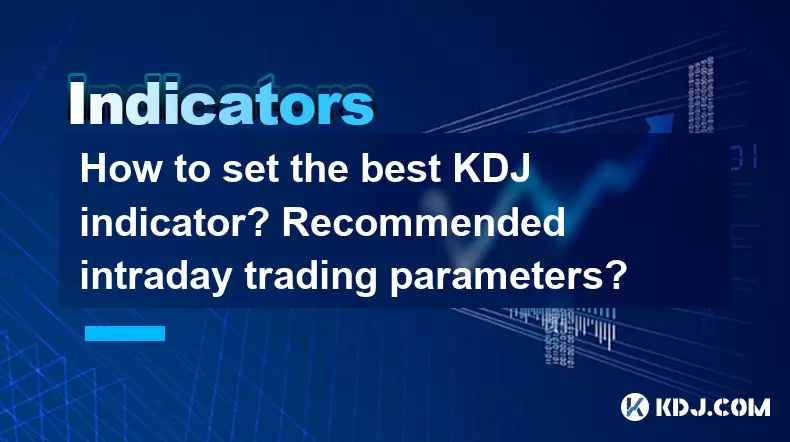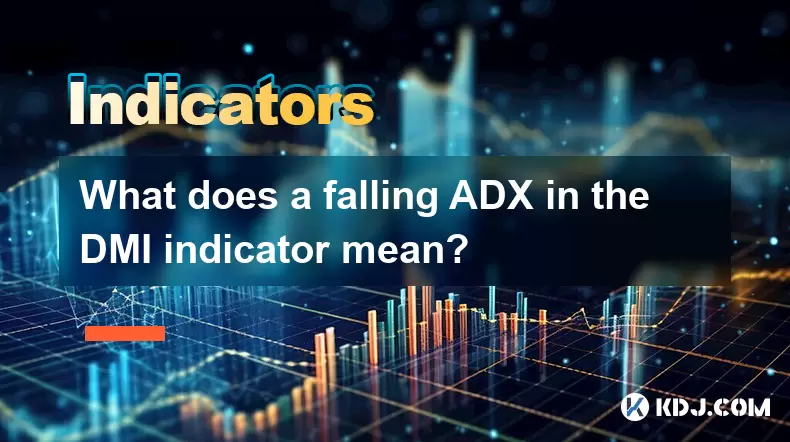-
 Bitcoin
Bitcoin $116700
0.24% -
 Ethereum
Ethereum $3973
4.34% -
 XRP
XRP $3.283
7.68% -
 Tether USDt
Tether USDt $1.000
0.01% -
 BNB
BNB $789.8
2.27% -
 Solana
Solana $176.2
3.31% -
 USDC
USDC $0.9999
0.00% -
 Dogecoin
Dogecoin $0.2238
5.14% -
 TRON
TRON $0.3389
-0.51% -
 Cardano
Cardano $0.7907
4.03% -
 Stellar
Stellar $0.4527
10.02% -
 Hyperliquid
Hyperliquid $41.07
4.27% -
 Sui
Sui $3.794
1.77% -
 Chainlink
Chainlink $19.49
10.40% -
 Bitcoin Cash
Bitcoin Cash $580.9
0.74% -
 Hedera
Hedera $0.2617
4.32% -
 Avalanche
Avalanche $23.41
3.67% -
 Ethena USDe
Ethena USDe $1.001
-0.03% -
 Litecoin
Litecoin $122.4
1.38% -
 Toncoin
Toncoin $3.364
1.49% -
 UNUS SED LEO
UNUS SED LEO $8.988
0.37% -
 Shiba Inu
Shiba Inu $0.00001295
2.82% -
 Uniswap
Uniswap $10.62
5.75% -
 Polkadot
Polkadot $3.922
4.46% -
 Dai
Dai $1.000
0.01% -
 Bitget Token
Bitget Token $4.494
2.15% -
 Monero
Monero $268.0
-1.30% -
 Cronos
Cronos $0.1523
3.68% -
 Pepe
Pepe $0.00001127
4.43% -
 Aave
Aave $285.4
4.85%
How to set the best KDJ indicator? Recommended intraday trading parameters?
The KDJ indicator, widely used in crypto trading, helps gauge market momentum with K, D, and J lines; set to 5, 3, 3 for intraday trading.
Jun 01, 2025 at 11:18 am

Understanding the KDJ Indicator
The KDJ indicator is a technical analysis tool that is widely used in the cryptocurrency trading community to gauge market momentum and potential reversal points. Originating from Japan, it is essentially a derivative of the stochastic oscillator but includes an additional component, the J line, which makes it more sensitive to market changes. The KDJ indicator consists of three lines: the K line, D line, and J line. The K line represents the fastest line, the D line is a moving average of the K line, and the J line is derived from the K and D lines and is used to predict potential price reversals.
Setting Up the KDJ Indicator
To set up the KDJ indicator on your trading platform, follow these steps:
- Open your trading platform: Ensure you are using a platform that supports the KDJ indicator, such as MetaTrader or TradingView.
- Access the indicator menu: Navigate to the section where you can add new indicators to your chart.
- Search for KDJ: Type "KDJ" in the search bar to find the indicator.
- Add the indicator to your chart: Click on the KDJ indicator to add it to your chart.
- Adjust the settings: The default settings for the KDJ indicator are typically set to 9, 3, and 3 for the periods of K, D, and J, respectively. You can adjust these values based on your trading strategy.
Recommended Intraday Trading Parameters
For intraday trading, the parameters of the KDJ indicator need to be fine-tuned to capture short-term market movements. The recommended parameters for intraday trading are generally set to 5, 3, and 3. These settings make the indicator more responsive to price changes, which is crucial for intraday traders who need to make quick decisions.
- Period for K: Setting the K period to 5 helps in capturing short-term trends.
- Period for D: A D period of 3 smooths out the K line, making it easier to interpret.
- Period for J: A J period of 3 makes the J line sensitive enough to provide early signals of potential reversals.
Interpreting the KDJ Indicator
Understanding how to interpret the KDJ indicator is crucial for making informed trading decisions. The key signals to look for are:
- Overbought and Oversold Conditions: The KDJ indicator ranges from 0 to 100. Readings above 80 indicate overbought conditions, while readings below 20 suggest oversold conditions.
- Crossovers: A bullish signal is generated when the K line crosses above the D line, and a bearish signal is generated when the K line crosses below the D line.
- Divergence: If the price of a cryptocurrency is making new highs or lows, but the KDJ indicator is not following suit, this could indicate a potential reversal.
Using the KDJ Indicator for Intraday Trading
When using the KDJ indicator for intraday trading, it's important to combine it with other technical analysis tools to increase the accuracy of your signals. Here are some strategies to consider:
- Combine with Volume: High trading volume can confirm the signals provided by the KDJ indicator. If the KDJ indicates a bullish crossover and the volume is increasing, it strengthens the buy signal.
- Use with Moving Averages: Combining the KDJ indicator with moving averages can help filter out false signals. For example, if the KDJ indicates a buy signal and the price is above a key moving average, the signal is more reliable.
- Monitor for Divergence: Keep an eye on divergence between the price and the KDJ indicator. If the price is making new highs but the KDJ is not, it could be a sign to sell.
Fine-Tuning the KDJ Indicator
Fine-tuning the KDJ indicator involves adjusting the periods of K, D, and J to better suit your trading style and the specific cryptocurrency you are trading. Here are some tips for fine-tuning:
- Experiment with Different Periods: Start with the recommended settings of 5, 3, and 3, but don't be afraid to experiment with different values to see what works best for your trading strategy.
- Consider the Volatility: More volatile cryptocurrencies may require shorter periods to capture quick price movements, while less volatile assets might benefit from longer periods to filter out noise.
- Backtest Your Settings: Use historical data to backtest different KDJ settings and see how they would have performed in past market conditions.
FAQs
Q: Can the KDJ indicator be used for all cryptocurrencies?
A: Yes, the KDJ indicator can be used for all cryptocurrencies, but its effectiveness may vary depending on the specific asset's volatility and trading volume. It's important to backtest the indicator with historical data for each cryptocurrency you plan to trade.
Q: How often should I check the KDJ indicator during intraday trading?
A: For intraday trading, it's recommended to check the KDJ indicator every 15 to 30 minutes, depending on your trading strategy and the volatility of the cryptocurrency you are trading. More frequent checks can help you stay on top of rapid market changes.
Q: Are there any common pitfalls to avoid when using the KDJ indicator?
A: One common pitfall is relying solely on the KDJ indicator without considering other technical analysis tools. Always use the KDJ in conjunction with other indicators and market data to confirm signals and avoid false positives. Additionally, avoid overtrading based on minor fluctuations in the KDJ lines.
Q: Can the KDJ indicator be used for long-term trading as well?
A: Yes, the KDJ indicator can be used for long-term trading by adjusting the periods to longer values, such as 14, 3, and 3. This makes the indicator less sensitive to short-term price movements and more suitable for identifying long-term trends.
Disclaimer:info@kdj.com
The information provided is not trading advice. kdj.com does not assume any responsibility for any investments made based on the information provided in this article. Cryptocurrencies are highly volatile and it is highly recommended that you invest with caution after thorough research!
If you believe that the content used on this website infringes your copyright, please contact us immediately (info@kdj.com) and we will delete it promptly.
- Roman Storm, Funding Effort, and the Looming Defense Retrial: A New York Minute on the Tornado Cash Case
- 2025-08-09 02:50:14
- Crypto's Wild Ride: XRP, Dogecoin, and the Altcoin Surge You Can't Ignore
- 2025-08-09 02:50:14
- Elon Musk, Bitcoin, and the Enduring Power of Approval: A Crypto Love Story?
- 2025-08-09 03:50:15
- Ruvi AI: The Next Big Thing After Ripple on CoinMarketCap?
- 2025-08-09 03:50:15
- Floki Price Surges: Elliott Wave and Fibonacci Setups Point to Potential Gains!
- 2025-08-09 02:30:16
- Pepe Price, RTX (Remittix?) & the $10K ETH Dream: NYC Crypto Chatter
- 2025-08-09 02:30:16
Related knowledge

What does it mean when the TRIX indicator suddenly diverges downward after a long period of convergence?
Aug 09,2025 at 12:56am
Understanding the TRIX Indicator in Cryptocurrency TradingThe TRIX indicator, or Triple Exponential Average, is a momentum oscillator used in technica...

Why is the rise limited after a MACD bottoming divergence?
Aug 09,2025 at 12:07am
Understanding MACD Bottoming Divergence in Cryptocurrency TradingThe MACD (Moving Average Convergence Divergence) is a widely used technical indicator...

What does it mean when the OBV continues to rise but the price is trading sideways?
Aug 08,2025 at 10:35pm
Understanding On-Balance Volume (OBV)On-Balance Volume (OBV) is a technical indicator that uses volume flow to predict changes in stock or cryptocurre...

What does a falling ADX in the DMI indicator mean?
Aug 09,2025 at 03:16am
Understanding the ADX and DMI Indicator FrameworkThe DMI (Directional Movement Index) is a technical analysis tool developed by J. Welles Wilder to id...

What does a double top pattern on the Williams oscillator mean?
Aug 09,2025 at 02:36am
Understanding the Williams %R OscillatorThe Williams %R oscillator is a momentum indicator developed by Larry Williams to identify overbought and over...

What is a nonce and how is it used in Proof of Work?
Aug 04,2025 at 11:50pm
Understanding the Concept of a Nonce in CryptographyA nonce is a number used only once in cryptographic communication. The term 'nonce' is derived fro...

What does it mean when the TRIX indicator suddenly diverges downward after a long period of convergence?
Aug 09,2025 at 12:56am
Understanding the TRIX Indicator in Cryptocurrency TradingThe TRIX indicator, or Triple Exponential Average, is a momentum oscillator used in technica...

Why is the rise limited after a MACD bottoming divergence?
Aug 09,2025 at 12:07am
Understanding MACD Bottoming Divergence in Cryptocurrency TradingThe MACD (Moving Average Convergence Divergence) is a widely used technical indicator...

What does it mean when the OBV continues to rise but the price is trading sideways?
Aug 08,2025 at 10:35pm
Understanding On-Balance Volume (OBV)On-Balance Volume (OBV) is a technical indicator that uses volume flow to predict changes in stock or cryptocurre...

What does a falling ADX in the DMI indicator mean?
Aug 09,2025 at 03:16am
Understanding the ADX and DMI Indicator FrameworkThe DMI (Directional Movement Index) is a technical analysis tool developed by J. Welles Wilder to id...

What does a double top pattern on the Williams oscillator mean?
Aug 09,2025 at 02:36am
Understanding the Williams %R OscillatorThe Williams %R oscillator is a momentum indicator developed by Larry Williams to identify overbought and over...

What is a nonce and how is it used in Proof of Work?
Aug 04,2025 at 11:50pm
Understanding the Concept of a Nonce in CryptographyA nonce is a number used only once in cryptographic communication. The term 'nonce' is derived fro...
See all articles

























































































